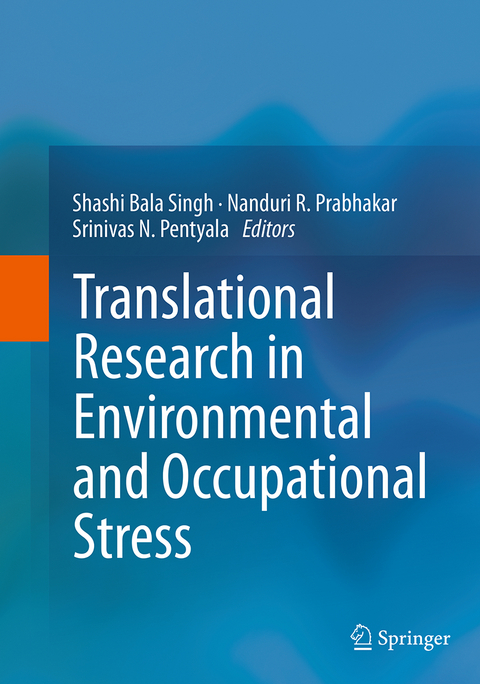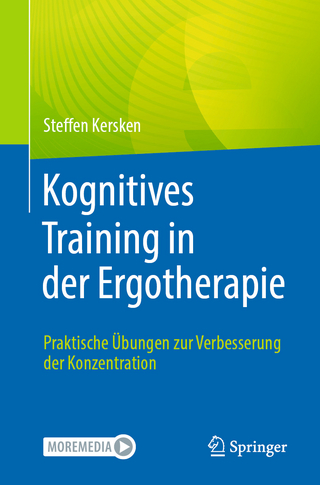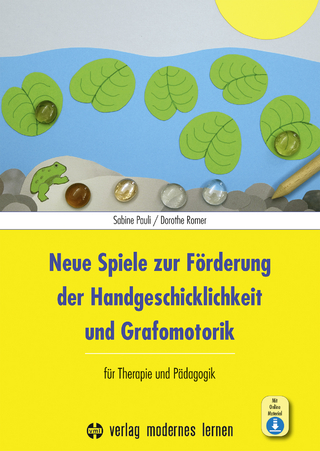
Translational Research in Environmental and Occupational Stress
Springer, India, Private Ltd (Verlag)
978-81-322-3522-4 (ISBN)
Dr. Shashi Bala Singh, Outstanding Scientist and Director, Defence Institute of Physiology and Allied Science (DIPAS), obtained her Ph.D. degree in Human Physiology from All India Institute of Medical Sciences, New Delhi and started her career in DRDO at DIPAS, Delhi as scientist ‘C’. She also served as Director, Defence Institute of High Altitude Research (DIHAR), Leh, before taking over as Director, DIPAS. She has immensely contributed to the understanding of high altitude physiology and pioneered the development of nutraceuticals and prophylactics for several high altitude maladies that include hypophagia and cognitive impairment. She has developed supplementation with antioxidant and cholinomimetic drugs to improve high altitude induced impairment in cognitive functions. She has been instrumental in devising technologies for improving the quality of life in extreme environmental conditions of the combatants. Some of the pertinent products include zero energy based solar shelters, Sourja; improvised space heating devices and microclimate controlled oxygen enrichment enclosure. She received “Scientist of the Year Award” by Hon’ble Prime Minister in year 2010 and is the elected Fellow of National Academy of Sciences, India (FNASc.), Indian Association of Biomedical Scientists (FIABMS) and Indian Academy of Neuroscience (FIAN). She is the President of Federation of Indian Physiological Societies (FIPS) and also holds the editorship in many prestigious journals. Nanduri R. Prabhakar received his Ph.D and D.Sc in Physiology from the M.S. University, Baroda, India and Ruhr University, Bochum, Germany, respectively. He was a fellow of the Swedish Institute at the Nobel Institute for Neurophysiology, Karolinska Institute, Stockholm. He joined the Case Western Reserve University, Cleveland, USA in 1984 as an Assistant Professor and became Professor and Vice-Chairman of the Department of Physiology (1997-2007). In 2007, he joined the University ofChicago and is currently Harold H. Hines Professor and Director, Institute for Integrative Physiology and Center for Systems Biology of O2 Sensing at the same university. He is a leading authority on O2 sensing mechanisms and physiological consequences of hypoxia. He is the Director of Program Project Grant funded by the National Institutes of Health, USA and published more than 230 papers and edited 7 books. Dr. Srinivas Pentyala is a faculty member of anesthesiology, urology, health sciences, physiology and biophysics at Stony Brook Medical Center, NY. He is also the Director for Translational Research in Stony Brook's Anesthesiology Department where he is working on several applied projects, including drug discovery, diagnostic markers and devices for health care settings. His research has received funding from both public and private sources. Dr. Pentyala has several publications and patents to his credit and also received numerous honors and awards.
Chapter 1: Translating Physiological Knowledge to Health Application.- Chapter 2: Translational Research: Journey from Traditional Wisdom to Rational Science.- Chapter 3: Stress Research Varied Paradigms.- Chapter 4: Therapeutic Potential of Intermittent Hypoxia: Lessons from Respiratory Motor Plasticity.- Chapter 5: High Altitude Research and its Practical Clinical Application.- Chapter 6: Nanomaterials in Healthcare.- Chapter 7: Nano toxicity and Cellular Stress Response: Physical and Chemical Properties and Their Link to Translational Research.- Chapter 8 : HIF-1 and EGLN1 Under Hypobaric Hypoxia: Regulation of Master Regulator Paradigm.- Chapter 9: Electrochemical Biosensors for Hypoxia Markers.- Chapter 10: Determining Nutritional Requirements of Indian Soldiers an Outcome of Translational Research.- Chapter 11: Improvements in Adjuvants for New Generation Vaccines.- Chapter 12: Rapid Acclimatization Strategies for High Altitude Induction.- Chapter 13: Noise the Silent Killer.- Chapter 14: Yoga for Preventive, Curative and Promotive Health and Performance.- Chapter 15: Technology Translation from Heat Physiology Research.- Chapter 16: Improving Habitability at High Altitude.- Chapter 17: Inhaled Nitric Oxide Therapy for Treatment of High Altitude Pulmonary Edema.- Chapter 18: High Altitude Medicine: The Path from Genomic Insight to Clinical Application.- Chapter 19: Hypoxia in Acute Chemical Emergencies: Toxicity, Mechanism and Treatment.- Chapter 20: Hypertension at High Altitude.- Chapter 21: Herbs for Mitigating High Altitude Maladies.- Chapter 22: Lessons from Twenty Years' Investigations of Intermittent Hypoxia : Principles and Practices.
| Erscheinungsdatum | 21.09.2016 |
|---|---|
| Zusatzinfo | 63 Illustrations, color; 34 Illustrations, black and white; XIV, 274 p. 97 illus., 63 illus. in color. |
| Verlagsort | New Delhi |
| Sprache | englisch |
| Maße | 178 x 254 mm |
| Themenwelt | Medizin / Pharmazie ► Physiotherapie / Ergotherapie ► Ergotherapie |
| Medizin / Pharmazie ► Studium | |
| Naturwissenschaften ► Biologie ► Humanbiologie | |
| Naturwissenschaften ► Biologie ► Zoologie | |
| Schlagworte | Biotechnology • Hypoxic physiology • Nanodiagnostics • Occupational disease • Omic science |
| ISBN-10 | 81-322-3522-3 / 8132235223 |
| ISBN-13 | 978-81-322-3522-4 / 9788132235224 |
| Zustand | Neuware |
| Informationen gemäß Produktsicherheitsverordnung (GPSR) | |
| Haben Sie eine Frage zum Produkt? |
aus dem Bereich


